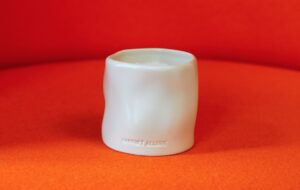The interactive installation by two Czech practices forms part of the Venice Architecture Biennale’s exhibition, How will we play together?
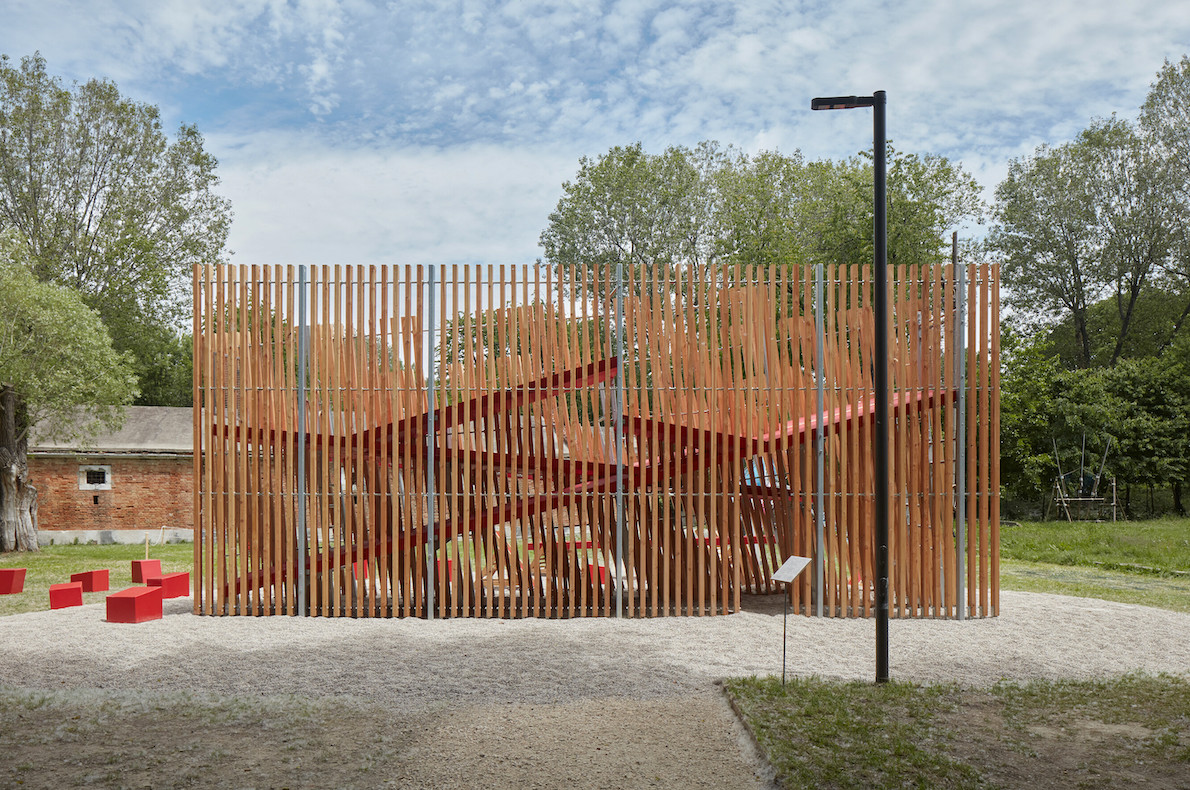
Words by Francesca Perry
The notion of a ‘playable fence’ – and subverting physical barriers into moments of joy – was embedded in recent consciousness with Teeter-Totter Wall (2019) by Rael San Fratello, in which the US-Mexico border fence temporarily transformed into a site of play through the use of pink seesaws.
This year, at the Venice Architecture Biennale, the idea has re-emerged in the How will we play together? exhibition hosted at the 19th-century fortress Forte Maghera, with a wooden fence structure that has been turned into a playground. The interactive installation, titled OFF FENCE, was designed by Czech practices SKULL studio and Molo architekti to respond to the biennale’s theme of How will we live together?, to which multiple global practitioners have responded with designing spaces, places and systems that bring people together.
OFF FENCE takes the fence form, a symbol of physical and social separation, but through the use of red-painted elements including a winding ramped path, seating and miniature slides, turns it into a playful piece of permeable infrastructure – a playground disguised as a barrier.
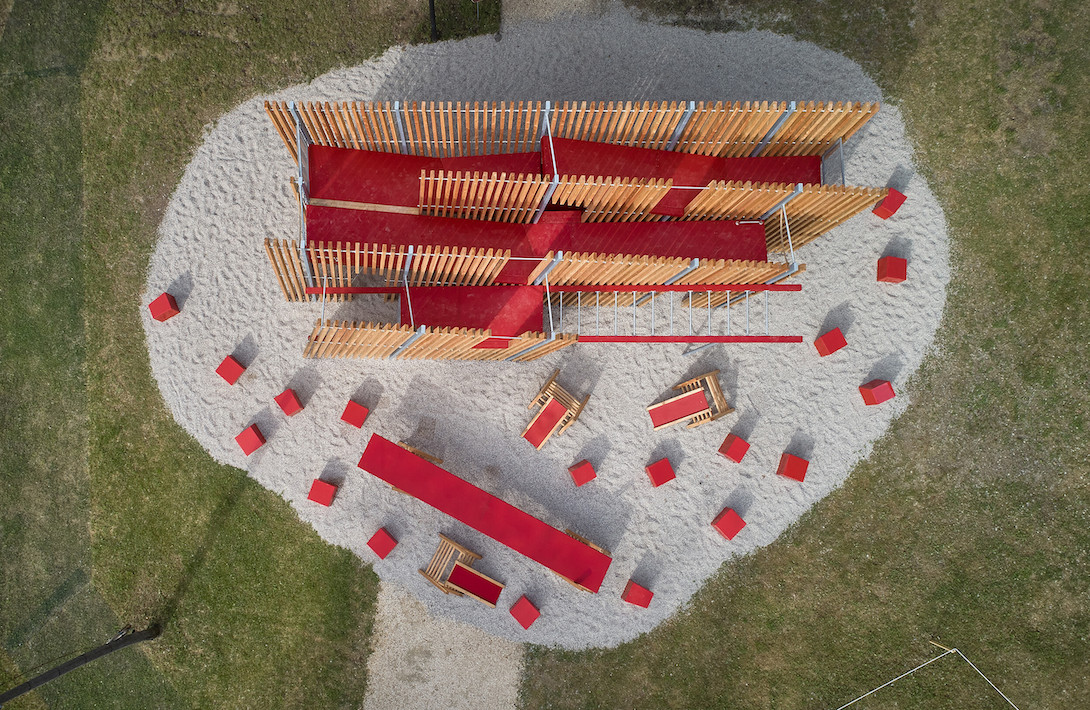
The installation – which sits alongside four other works in the play-focused exhibition – is located in the middle of a pedestrian path, forcing visitors to interact with it. ‘We choose a confrontational tone,’ says Matěj Hájek of SKULL studio. ‘We cut across the path. We transform an obstacle into an impulse. An impulse for change.’
‘In cities there aren’t enough opportunities for the free movement of children,’ adds Tereza Kučerová of Molo architekti. ‘Playgrounds are often designed as the only places for playing. For us, the fence demarcating children’s playgrounds is a symbol of this deficiency. It separates children from the remainder of the urban environment. In cities designed with the needs of children taken into account, such fences aren’t necessary.’
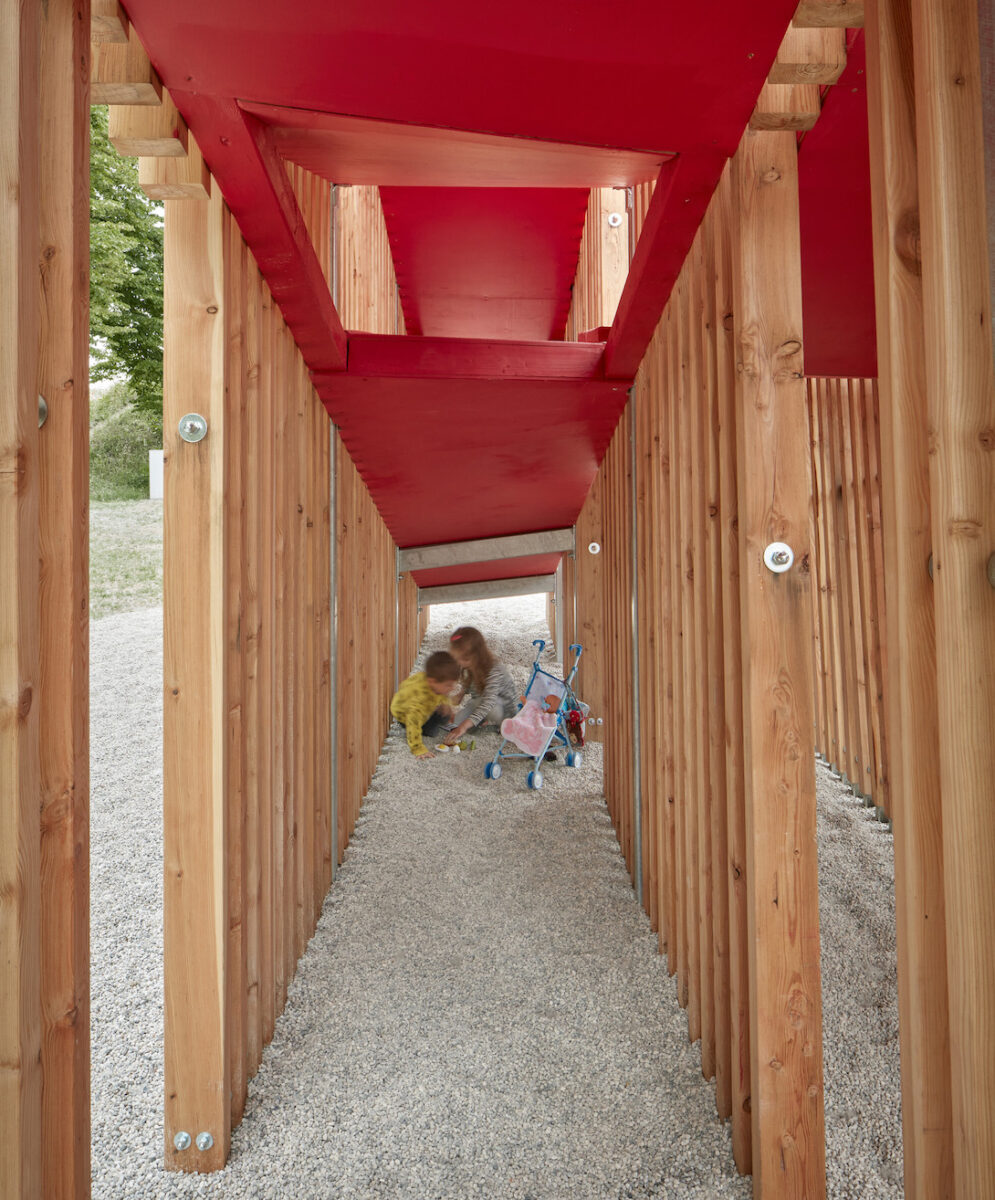
The installation is formed by four tall fence structures made of larch wood profiles, which progressively incline from the vertical axis. These are mutually interconnected with sloping paths. Access to the installation is possible along these paths as well as via climbable steel ladders at the sides.
For highlights of what else is on show at the 17th Architecture Exhibition – La Biennale di Venezia, open to the public until 21 November 2021, read our roundup.
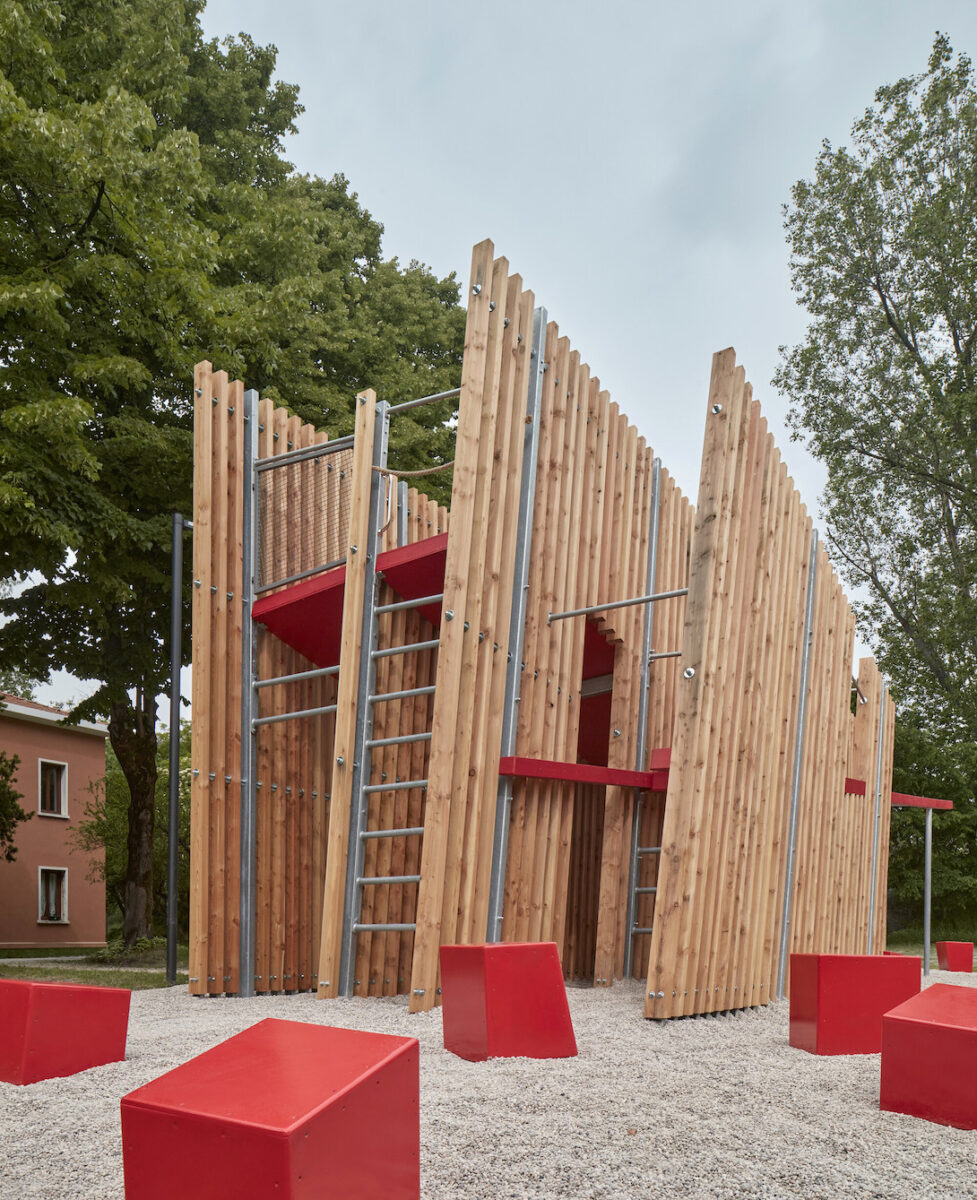
Photography by BoysPlayNice
Get a curated collection of architecture and design news like this in your inbox by signing up to our ICON Weekly newsletter









